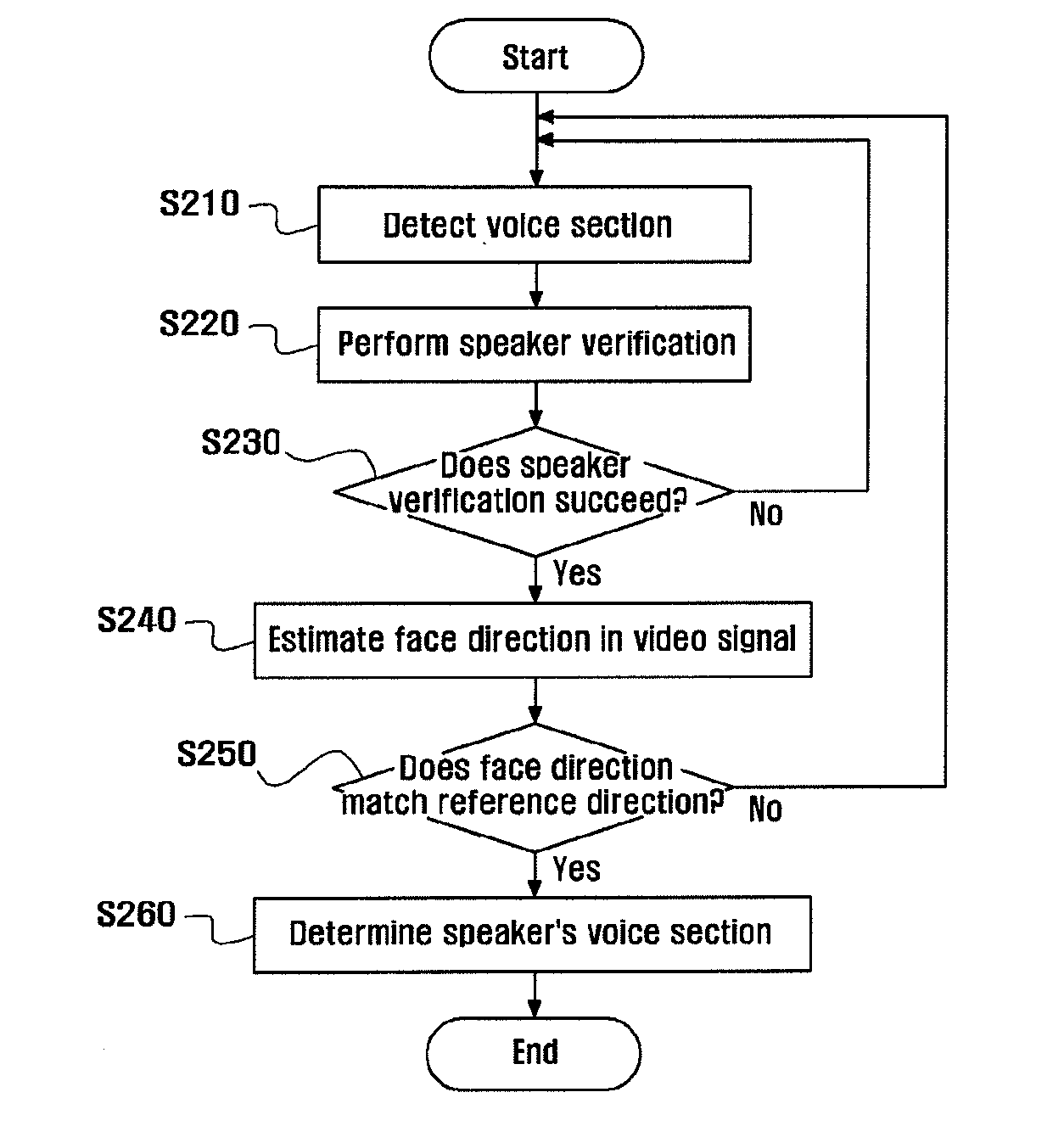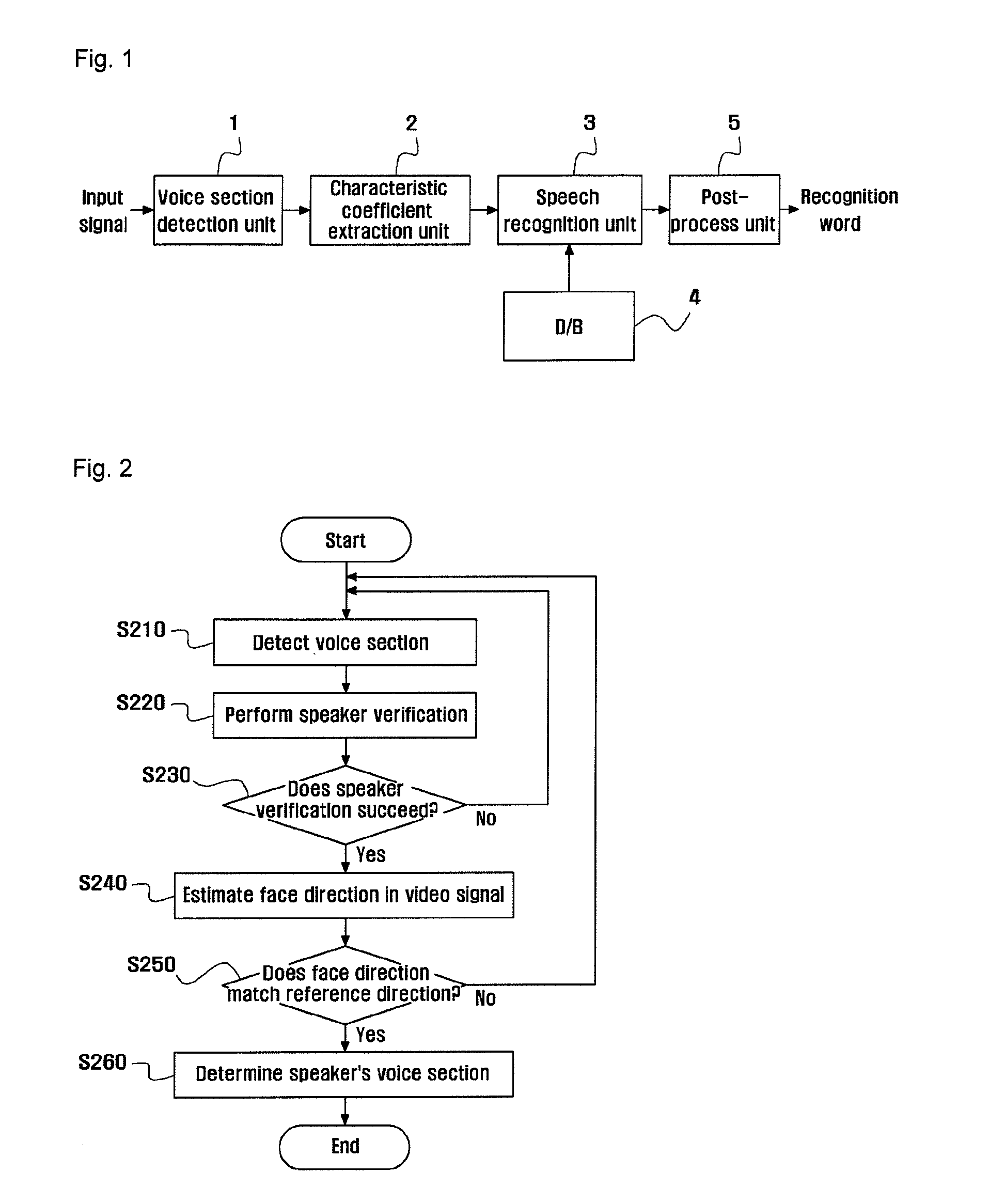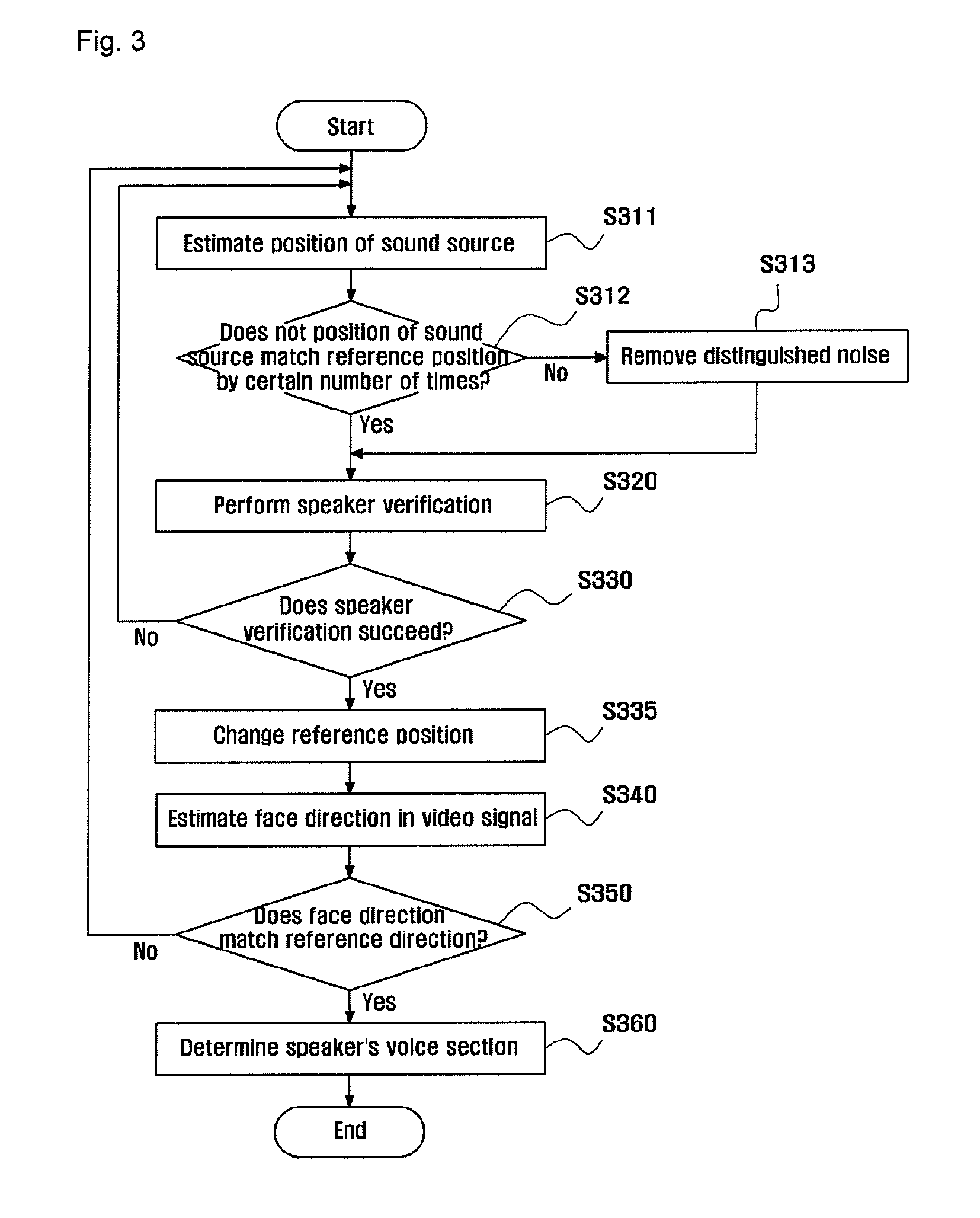Method for detecting voice section from time-space by using audio and video information and apparatus thereof
- Summary
- Abstract
- Description
- Claims
- Application Information
AI Technical Summary
Benefits of technology
Problems solved by technology
Method used
Image
Examples
Embodiment Construction
[0024]Hereinafter, preferred embodiments of the invention will be described by referring to the drawings. However, the embodiments of the invention to be exemplified below may be modified into various different forms, and the scope of the invention is not limited to the embodiments to be described later.
[0025]In a method for extracting a voice section according to one embodiment of the invention, it is assumed that a speech recognition system knows a voice generation point in advance or knows a signal generation position through a voice source position tracking technique. The system ignores noise generated from a desired position and searches for only a voice generated in desired position and direction. In order to detect a voice section from a voice and noise simultaneously input to a microphone, it is desirable to use a microphone array. Since the microphone array may search for a sound source position using a plurality of microphones, it has an advantage in that a large amount of...
PUM
 Login to View More
Login to View More Abstract
Description
Claims
Application Information
 Login to View More
Login to View More - R&D
- Intellectual Property
- Life Sciences
- Materials
- Tech Scout
- Unparalleled Data Quality
- Higher Quality Content
- 60% Fewer Hallucinations
Browse by: Latest US Patents, China's latest patents, Technical Efficacy Thesaurus, Application Domain, Technology Topic, Popular Technical Reports.
© 2025 PatSnap. All rights reserved.Legal|Privacy policy|Modern Slavery Act Transparency Statement|Sitemap|About US| Contact US: help@patsnap.com



